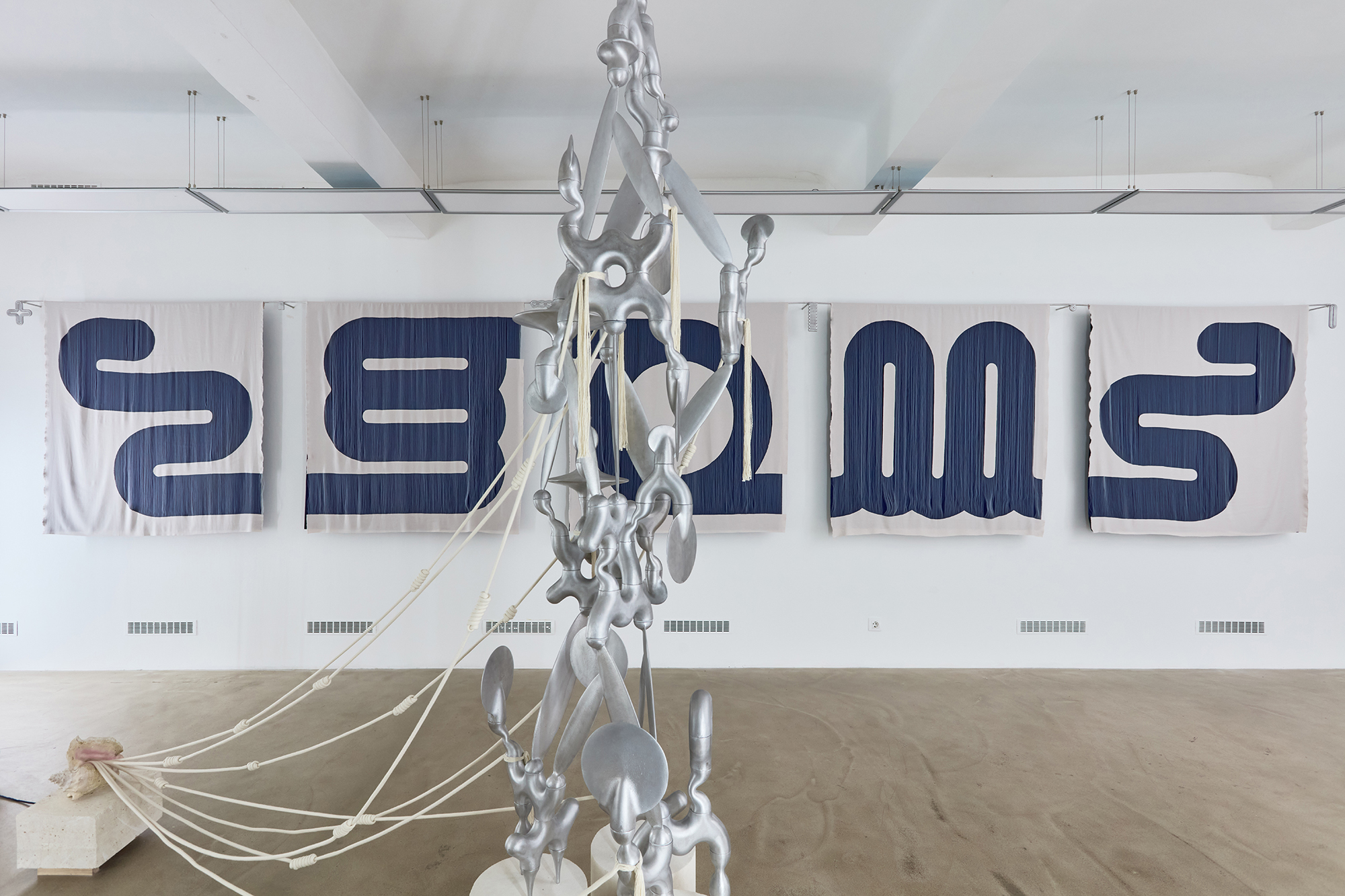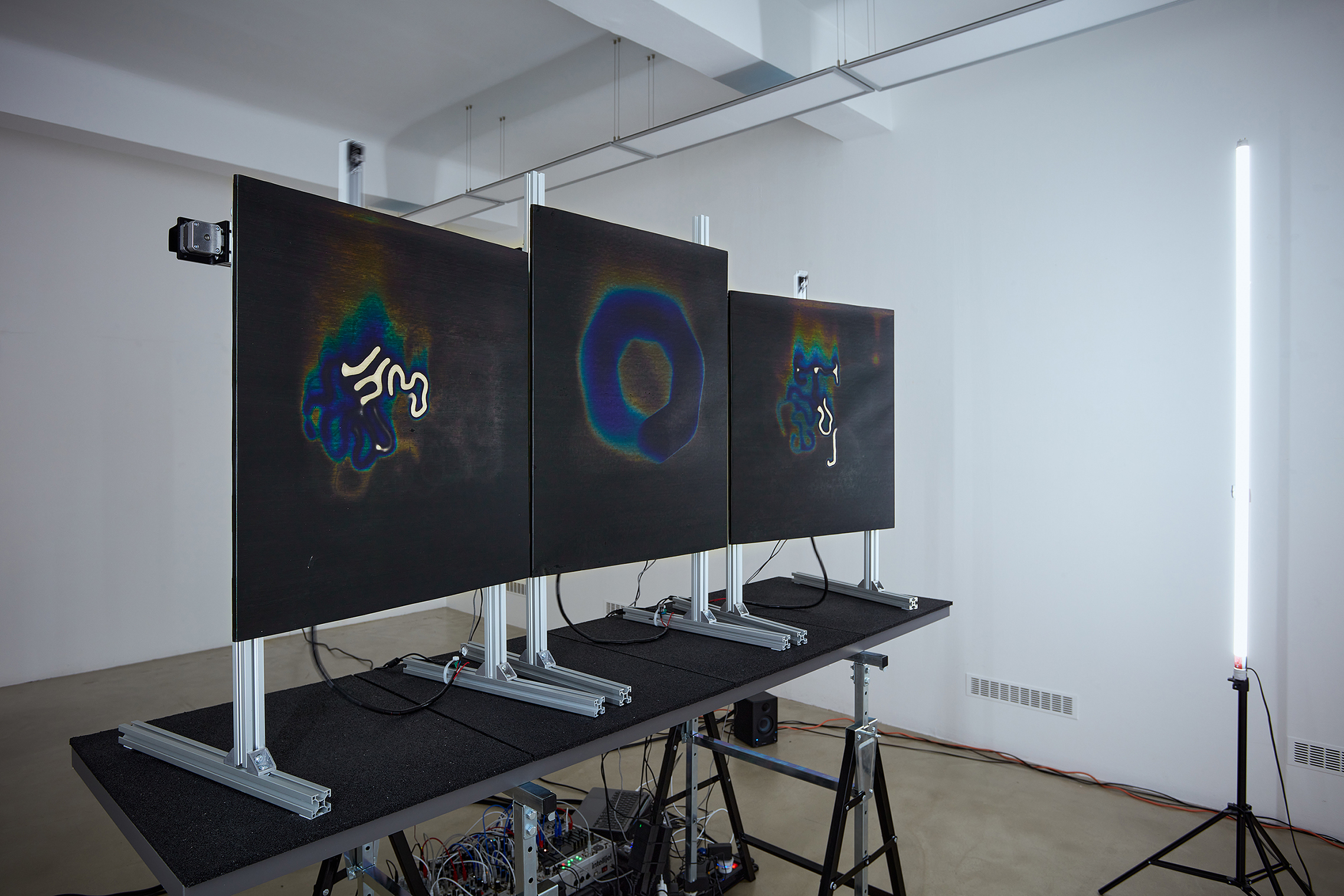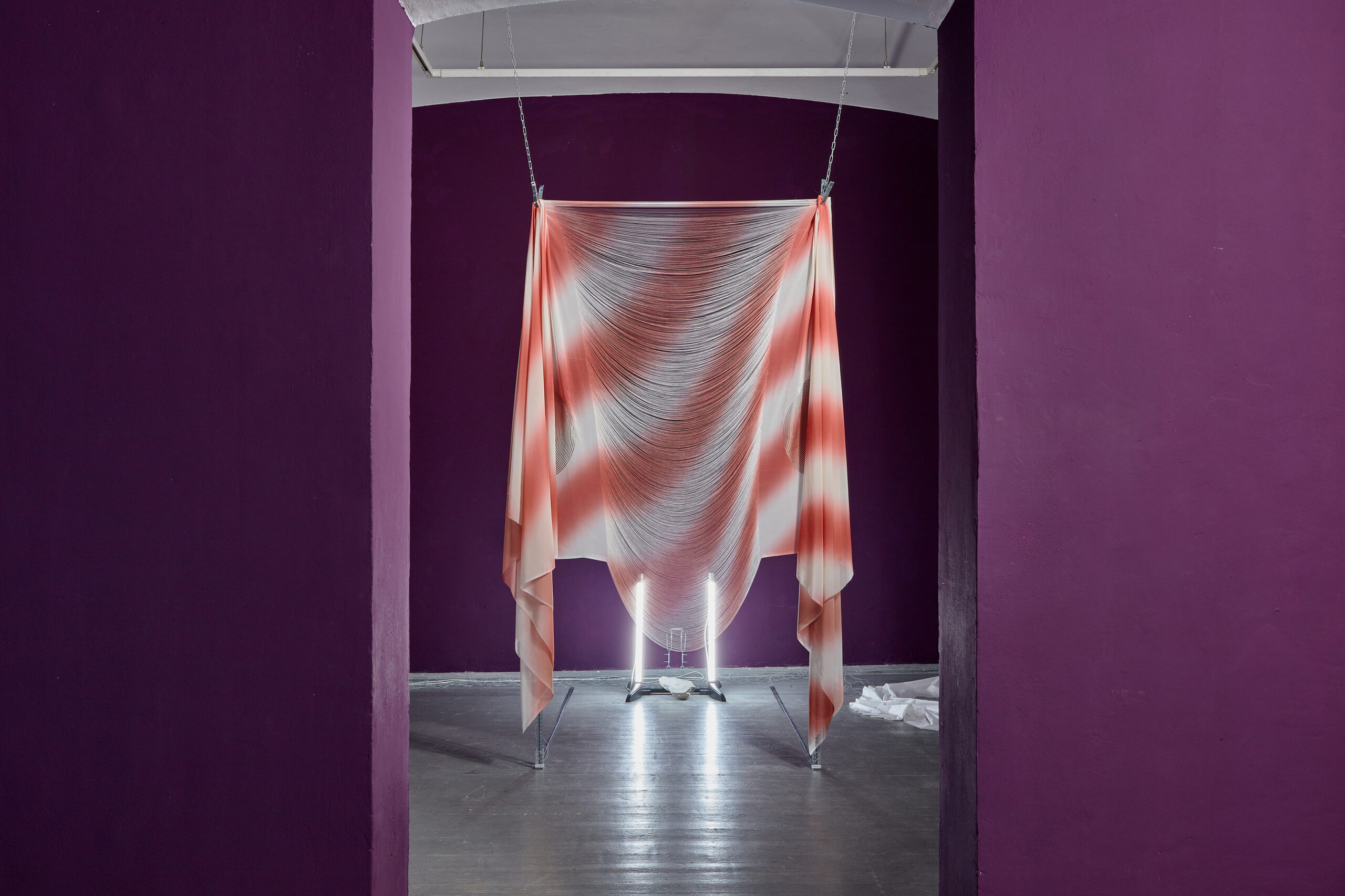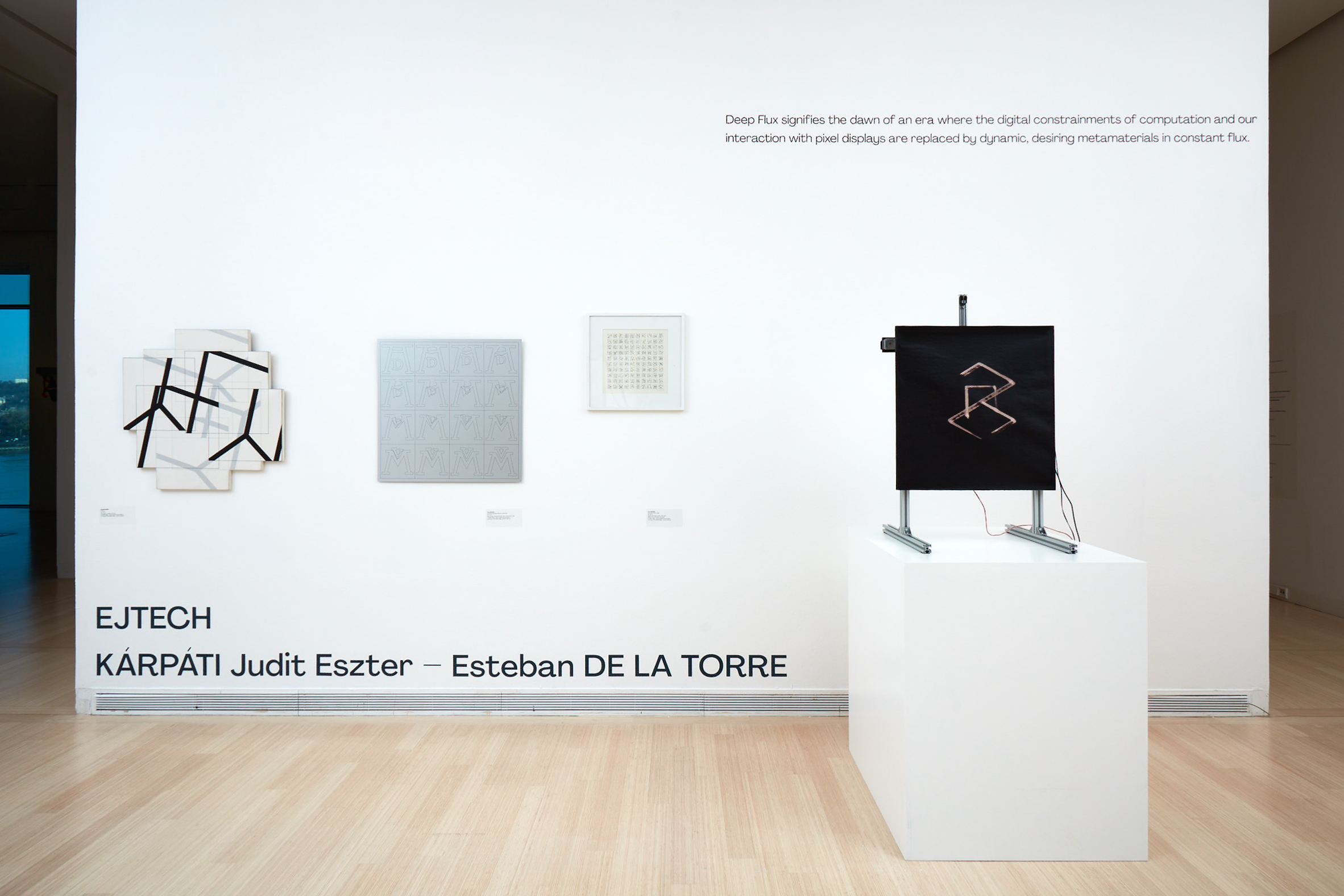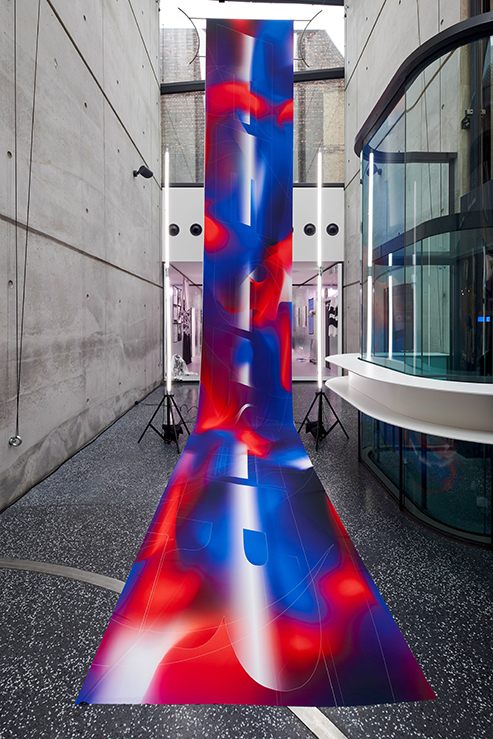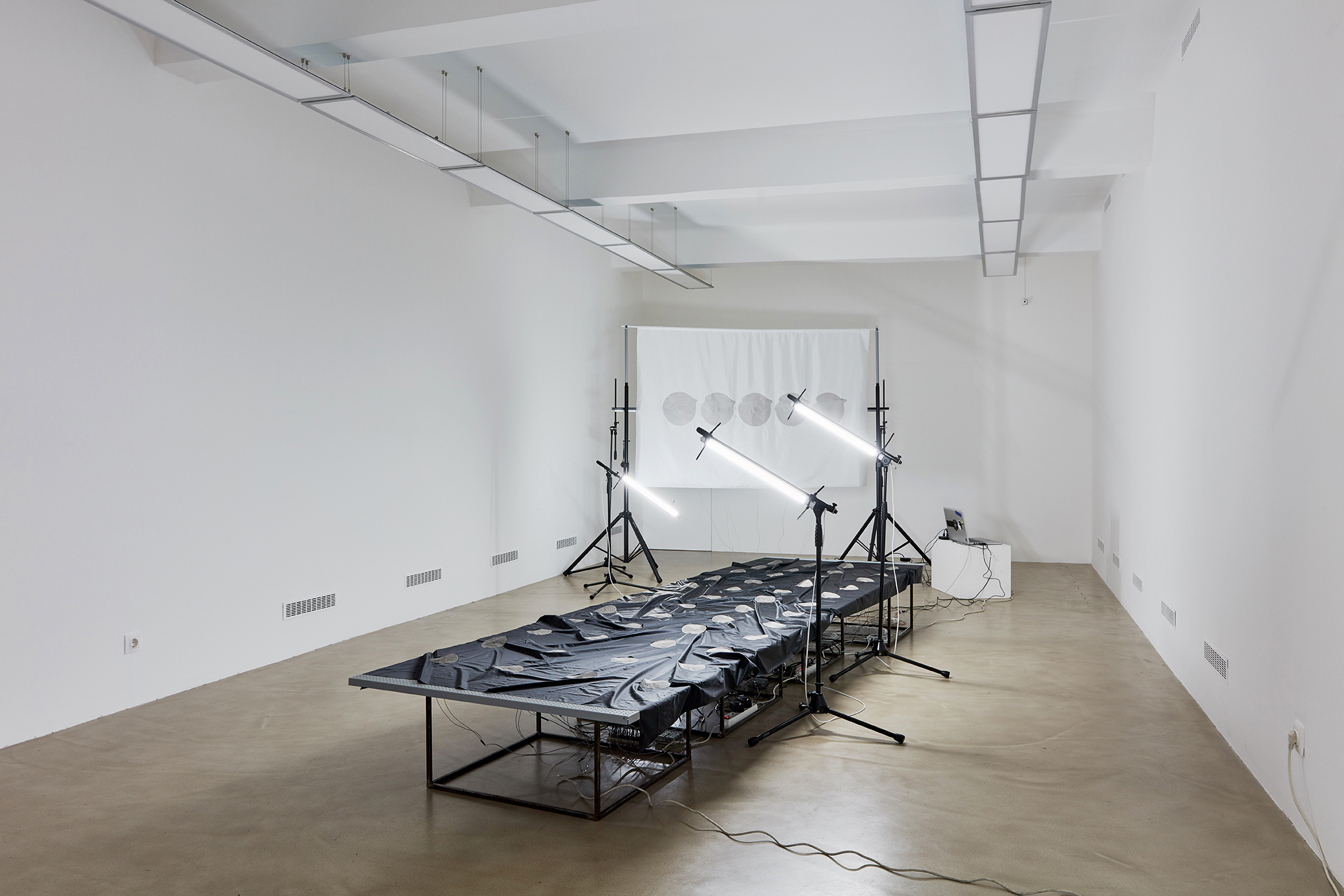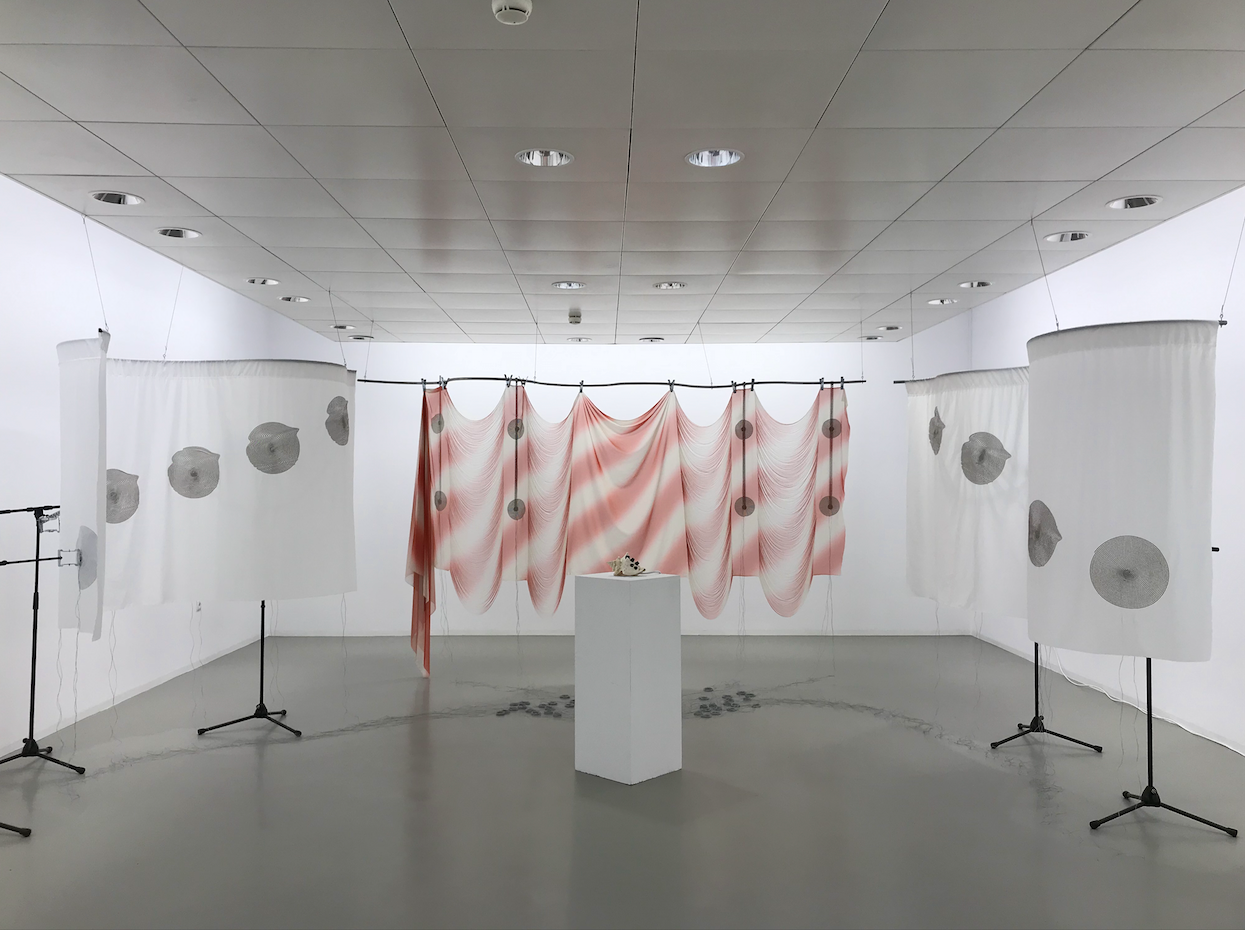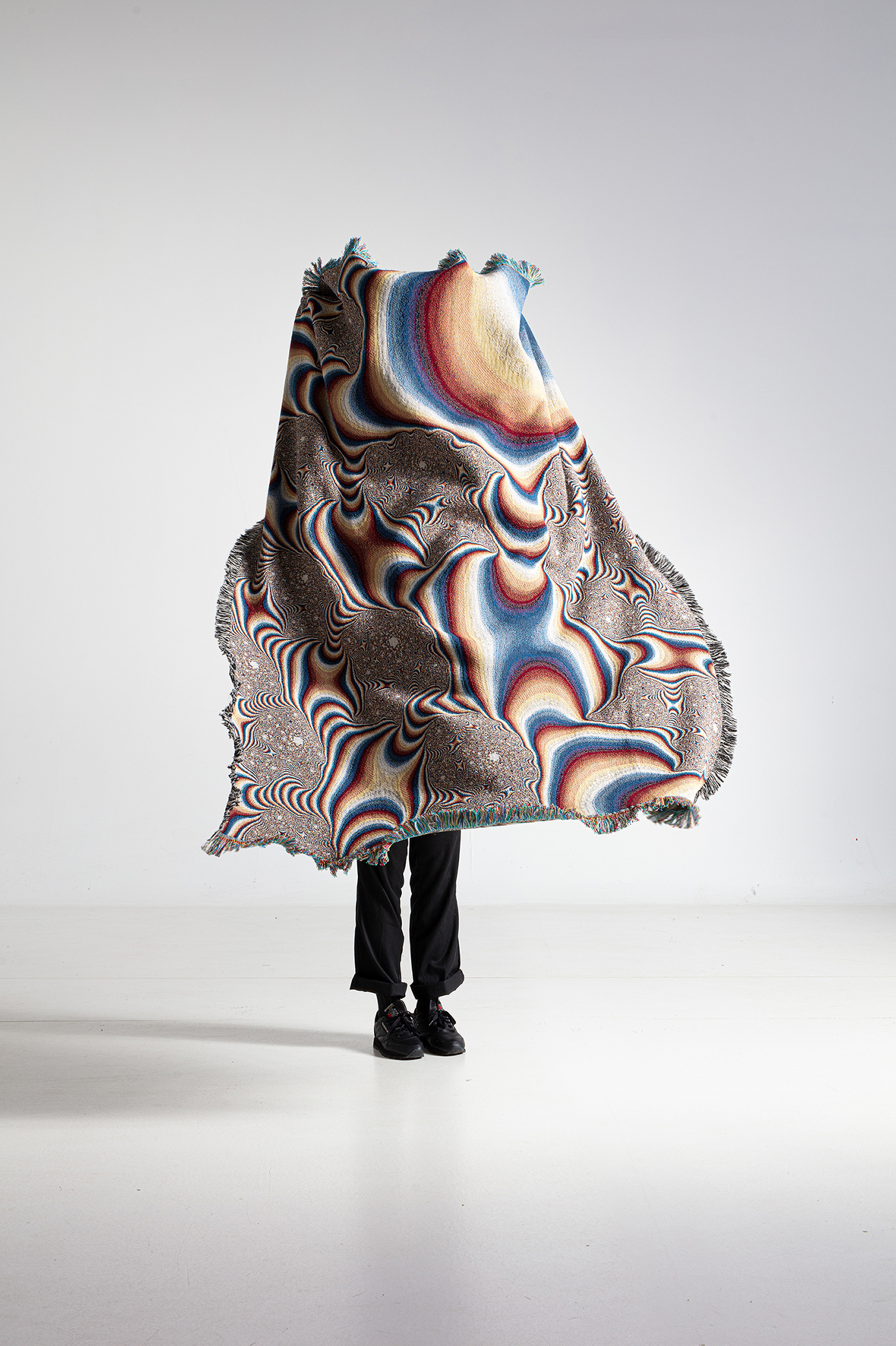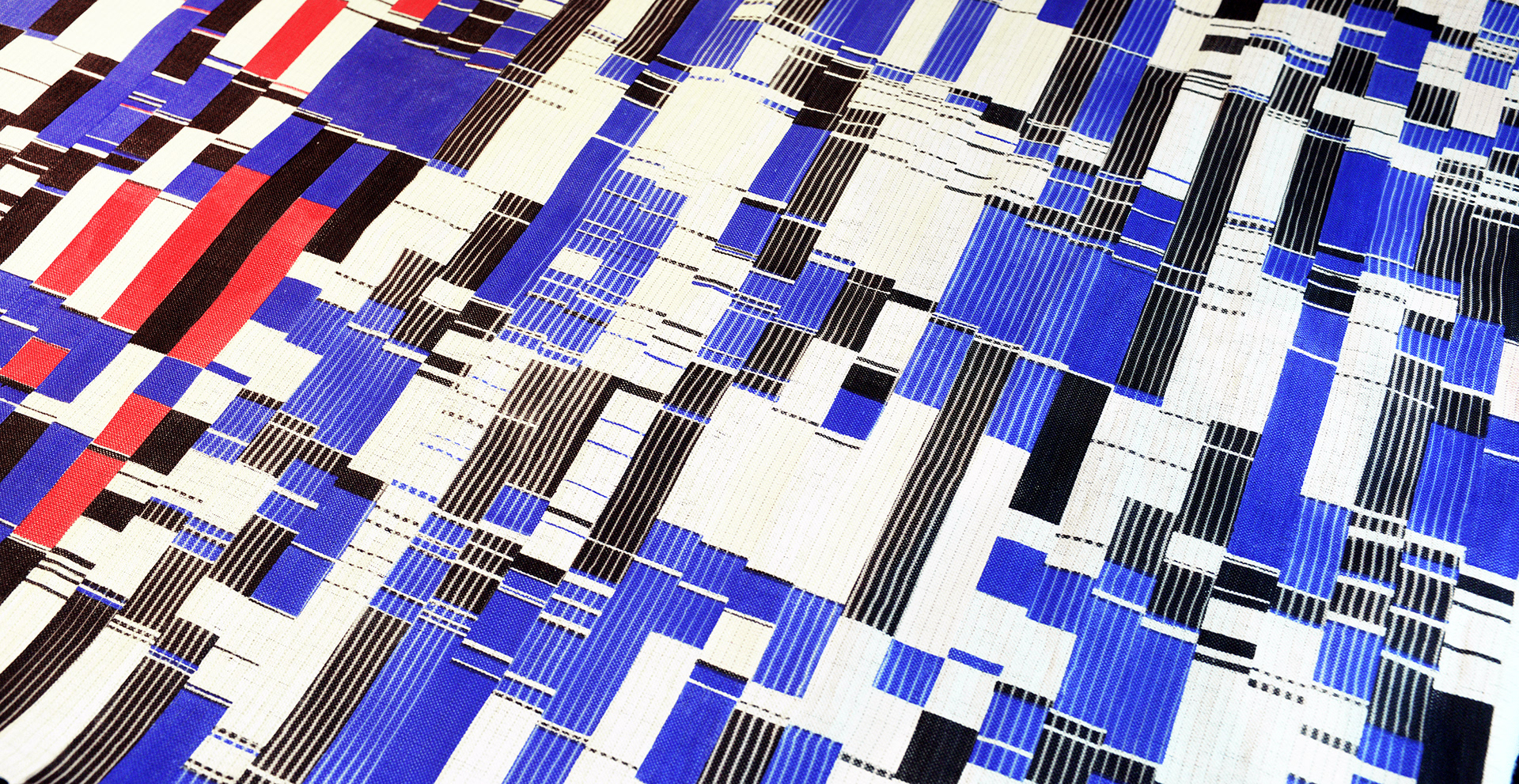Judit Eszter Kárpáti
Age of String, 2024
burn out textile, aluminium sculpture, ropes, conch shell, custom electronics variable dimensions
We present a space that encompasses uchronic fictional archaeology, where techno-spiritual ritualism can blossom from an underlying dynamic system. We raise a modular menhir of vital materiality where touch incites matter into motion treating sound as a territorial marker where space is activated. Our realization takes form in a multilayered environment enabling the potential to construct new mythologies. An activity that affects the overlap between space, matter and body. Ecology of knowledge systems. Ecology of sentient matter.
Judit Eszter Kárpáti
XENOPTYX, 2022
xyz plotter system, custom made augmented canvases, custom built brush head and electronics, extruded aluminium, motion sensors, macbook pro, soundcard, quardraphonic sound system variable dimensions
XENOPTYX is a performative installation creating new image formats which propose to reexamine and understand what matter is, considering language and meaning with its fluid and energetic nature, a dynamic material agency.
Judit Eszter Kárpáti
All Direction Is Curved, All Motion Is Spiral, 2019
5-channel textile (black) 500cm x 150cm, 2-channel textile (white) 150cm x 100cm, 3-channel textile (blue) 1000cm x 75cm, 2-channel Textile (gradient) 250cm x 200cm, 1-channel textile (blue-grey) 100cm x 30cm, 1-channel textile (blue-grey) 80cm x 50cm. Printed organza, silk, technical textile, CuNi textile, Neodymiun magnets, LED lights, limestone, aluminum extrutions, relays, custom hardware, Organelle, MacBook Pro, MaxMSP, variable dimensions variable dimensions
All Direction Is Curved, All Motion Ss Spiral is a site specific installation that reshapes the gallery space by performative means of textiles, spirals, sound and light. Each room is a layer, an agency of mutual constitutions intra-acting. All sound is emitted by the textiles allowing matter to perform itself, unfolding unexplored spatial distances, meditating presence, articulating time, generating a new kind of awareness that reorganizes patterns of behaviour, thus defining a way of sensing and engaging with the environment that hangs at the threshold of consciousness and perception. Via the sonorous-textile phenomena, by deliberately setting matter into controlled motion, sound wave constellations materialize in ever changing geometric paths inviting the visitor to passively act on the spiritual practice of experiencing reality in layers of emerging patterns. Things made of smaller things. Spirals spiraling into spirals.
Judit Eszter Kárpáti
Deep Flux, 2021
Textile, reactive pigment, custom code and electronics, extruded aluminium, Raspberry, Manfred Mohr and Vera Molnar artworks variable dimensions
Deep Flux signifies the dawn of an era where the digital constrainments of computation, and our interaction with pixel displays is replaced by dynamic, desiring metamaterials in constant flux. Using Generative Adversarial networks (GAN) an AI is trained to perpetually paint new paintings on a canvas treated with reversible dynamic pigment. This enables the neural network to reach out into the physical world and create short lived traces and compositions in constant flux. Training datasets are based on curated works from pioneers of computer art Vera Molnar and Manfred Mohr. Confronted with this process, the viewers' tendency to impose meaningful interpretation and narrative to the generated art piece questions whether art lies in the creative emancipation of the AI, the black pigment potentially containing all colors, or the intercognivite experience of the installation.
Judit Eszter Kárpáti
FEELER, 2023
Digitally printed textile, galvanized textile, elastic mesh, custom electronics and software Variable dimensions
Feeler /ˈfiːlə/ noun an animal organ such as an antenna / aerial or palp that is used for testing things by touch or for searching. The exhibition explores the heights and depths of the invisible substances around us, where the several meter long sublimated and meticulously pleated soft monolith FEELER, receives and extends out to become an instrument which unveils the spatial quality of LRRH_AERIAL – the tone-of-place, a perceptual space is experienced by the visitors. The soft monolith is tuned with augmented material sensitivity to electromagnetic tides flowing within the space and amplified into audible range. In FEELER, the artists bring attention to the continual flux of energy and vibrant materiality by sculpting the air, combining concepts of space, energy, matter and time into a multisensorial soft sculpture. This self-generating soundscape is autonomous and perpetually modulated by the electromagnetic activity occurring within reach of the monolith’s soft antennae. What is invisible finds its way through.
Judit Eszter Kárpáti
Phase In, Phase Out, 2020
Technical textile, CuNi galvanized textile, aluminum profiles, perforated aluminum sheets, class D amplifiers, aggregated sound cards, neodymium magnets, custom soft to hard cabeling, custom electronics 400 x 150 x 50 cm
Phase In, Phase Out is the result of an art-based study on the crossmodal, employing sound, textile and space as one unified medium. By augmenting textile into a multi channel electroacoustic transducer, EJTECH explores the “alogogenic” properties of sound via the unique timbre of textile, through sound pieces or “electronic poems” specifically written for, and performed on a purely textile-sound system.
Judit Eszter Kárpáti
Draping Sound, 2019
Technical textile, CuNi galvanized textile, class D amplifiers, aggregated sound cards, neodymium magnets, custom soft to hard cabeling, custom electronics Variable dimensions
Draping Sound is an installation and performance centered around the poiesis of time, space and limits of human perception. As sonorous phenomena unfolds, it constitutes spaces, mediates presence and articulates time. Visitors move freely throughout the installation to enable a heightened sensory encounter with diminute variations in correlation to the position of self within the space and the vibrating textiles. This liminal space appears at the threshold of consciousness and perception, unfolding the joint potentials of textile and sound as a spatiotemporal material process. By augmenting textile into a multichannel electroacoustic transducer, Draping Sound explores sonic alogogenic properties via the unique timbre of textile, through sound compositions specifically written for and performed on a purely textile-sound system. The intrinsic materiality and expressivity of textiles, with their sensory-rich haptic experiences, create new methods to interact with and to experience sound. Patterns of high, mid and low range frequency tones sweep across the textile pieces, creating sound and resonating in physical territory.
Judit Eszter Kárpáti
Dung Dkar Cloak, 2023
cotton, recycled cotton, technical thread 183 cm x 138 cm
Dung Dkar Cloak is a soft interface specifically created for intuitive musical interactions. It is a fractal tapestry augmented in order to create an intimate explorative material experience. Developed at the Material Research Hub within the Moholy-Nagy University of Art and Design.
Judit Eszter Kárpáti
Dissolved Sequences, 2023
cotton, wool, wire, custom electronics 60 x 40 cm
Judit Eszter Kárpáti
Chromosonic, 2013
Linen, nichrome, dynamic pigment, custom electronics, custom software 200cm x 80cm
Chromosonic reflects on the exponential growth of digitalisation in the physical world. It is an augmented textile structure, an electronic interface, and a sensitive second skin. In a time of screens, which pretend to be immaterial and untactile, we tend to forget that these interfaces are our primary methods and objects of organizing and interacting with the world. The flatness of the screen is materializing within reality, and turned to structure of threads. The screen printed glitches appear on a hand woven, flexible textile. A glitch is a short-lived fault in a system, many times due to mistranslation, or loss of information. Chromosonic contributes to the visualization of acoustics in the space between material research and art. Sound sources generate an electrical charge. This heats the material and the material in turn reacts visually. These processes can be overlaid and manipulated through the haptic interaction of the observer. In this way the material becomes an aesthetic metaphor for the complexity and interaction of systems.
